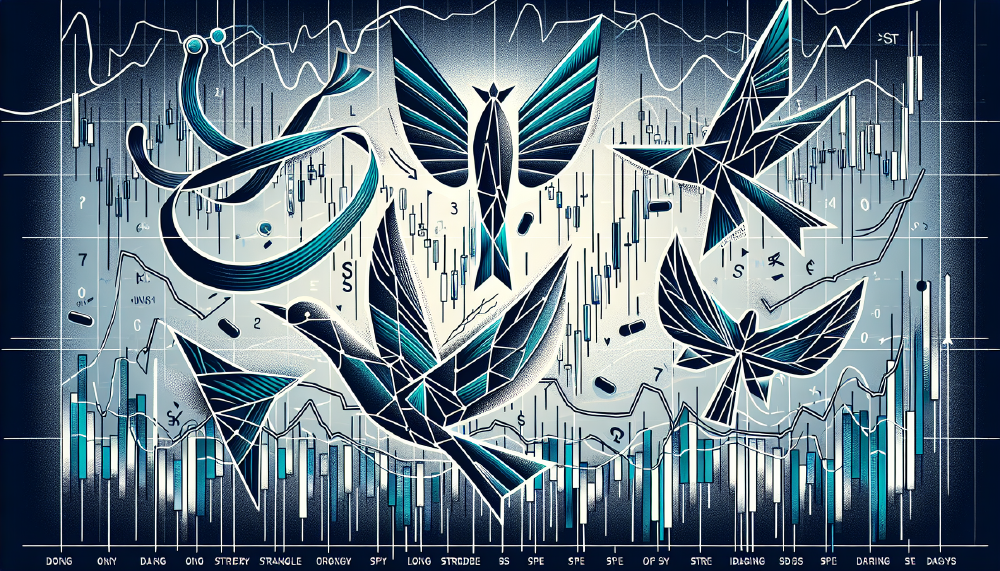Deciding between SPX and SPY for your investments? The key difference lies in SPX being a non-tradable index and SPY a tradable ETF. Our guide focuses on the distinct trading dynamics and opportunities each presents, helping clarify which might suit your strategy without overwhelming you with the finer points reserved for our in-depth exploration of “spx vs spy”.
Key Takeaways
SPX represents the S&P 500 index and is not directly tradable, offering no direct share ownership or dividends, while SPY is a tradable ETF that tracks the S&P 500, offering the advantages of ETFs such as intraday trading and the use of limit orders.
Trading SPX options provides unique advantages like European-style exercise that reduces early assignment risk, a simpler cash settlement process, and favorable tax treatment under section 1256 contracts.
SPY options trading benefits from high liquidity with significant daily trading volume and tighter bid/ask spreads which make it a cost-efficient and accessible option for retail traders, providing more flexibility with extended trading hours.
SPX and SPY: Key Differences Explained

In the realm of options trading, comprehending the distinction between SPX and SPY is among the initial steps. While the SPX represents the S&P 500 Index and isn’t directly tradable, SPY is a tradeable ETF tracking this index. The key here is the nature of these two instruments. SPX, being an index, reflects the performance of 500 large U.S. companies but doesn’t offer direct share ownership or dividends.
On the other hand, SPY, being an ETF, can be bought and sold in the market, offering different trading opportunities. This is one of the secrets that make trading SPY options quite attractive, as it brings the broad market exposure of the S&P 500 into the reach of individual investors, with all the added advantages of ETFs such as the ability to trade intraday and use limit orders.
Advantages of Trading SPX Options

Several unique advantages accompany the trade of SPX options. For starters, SPX options have a European-style exercise, meaning they can only be exercised on the expiration date. This reduces the risk of early assignment, providing traders with more control over their position and potential profits.
The cash settlement process also serves as another advantage of trading SPX options. Instead of requiring physical delivery of shares, the cash settlement is based on the S&P 500 Index value at the time of expiration. This feature simplifies the trading process and eliminates the need to deal with the logistics of stock delivery.
The tax advantage offered by SPX options trading could be considered its most significant benefit. Thanks to a blended tax treatment of 60% long-term and 40% short-term capital gains under section 1256 contracts, SPX options can provide a tax edge to traders, making them a strategic choice in many trading portfolios.
Advantages of Trading SPY Options

Trading SPY options presents several appealing advantages, should you consider it. The SPY ETF’s high trading volume, often exceeding 5 million contracts daily, contributes significantly to its liquidity, making it one of the most liquid contracts available. This high liquidity is a boon for traders, providing the ability to enter and exit positions smoothly, even during periods of market volatility.
Furthermore, the smaller contract size in SPY options trading, compared to larger index options, enables traders to:
Leverage the S&P 500’s performance through a single trade
Have easier access to trading SPY options
Make SPY options a more accessible choice, especially for retail traders.
A notable advantage of trading SPY options is:
the generally tighter bid/ask spreads
cost-efficient choice for traders, ensuring they get the most out of their trades
extended trading hours, providing greater flexibility and more opportunities to make the most of market moves.
Analyzing Market Conditions for SPX and SPY
Grasping the market conditions is of utmost importance when trading SPX or SPY options. In an uptrending market, for instance, buying dips is often more successful than attempting to short the market. Recognizing these trends requires careful analysis, discipline, and a keen eye for market nuances.
Robust research and analysis bolster effective SPY options trading strategies, making it essential to understand correlations among major indexes. This can help traders identify opportunities, manage risks, and make more informed decisions.
Comprehending dynamic spread strategies is another significant facet of market analysis. These strategies can yield higher returns but also involve higher average losses. Therefore, incorporating a trading strategy with trade management at 21 days to expiration can optimize performance, helping traders balance potential gains against risks.
Technical Analysis for SPX and SPY
Trading SPX and SPY options greatly benefits from the invaluable tool of technical analysis. One of the key components of this analysis is the use of moving averages. These averages help identify overall market trends, providing traders with insights into potential future market movements.
For instance, if SPY is trading above its 66-day moving average, it can signal a potential upward market direction. This can be a strong buying signal, presenting an opportunity for traders to enter the market and potentially reap profits from an upward trend.
Another crucial part of technical analysis is identifying potential entry points based on momentum signals. A close higher than the previous 19 days in SPY can signal possible bullish momentum. Traders can use this signal as an entry point, positioning themselves to potentially benefit from the upward market momentum.
Implied Volatility and Option Pricing
Grasping implied volatility is another critical aspect of trading SPX and SPY options. Higher implied volatility suggests larger price swings in an underlying asset, which can lead to higher pricing of options. This is particularly relevant for options like SPX Weeklys, which are known for their high gamma.
Implied volatility is a metric used to anticipate future price fluctuations of an asset based on market prices of its options. It provides a measure of the market’s expectations of the asset’s future volatility, helping traders gauge potential price movements and manage risks.
By understanding implied volatility, traders can:
Make more informed decisions about their option trades
Assess the potential risks and rewards and adjust their strategies accordingly
Manage risks associated with option pricing and potential price movements of the underlying asset
This understanding can be particularly beneficial in managing risks associated with option pricing and potential price movements of the underlying asset.
Strategies for Trading SPX Options

Traders frequently utilize several popular strategies when trading SPX options. One such strategy is the credit spread. This strategy offers high-probability trades by combining the sale of an option with the purchase of a further out-of-the-money option in the same expiry period. This strategy allows traders to profit from the spread between the two option prices.
Another popular strategy for trading options, specifically SPX options, is the iron condor. This strategy involves selling a put spread and a call spread with the hope that the S&P 500 index will remain between the two short strikes. If this occurs, all four options can expire worthless, yielding maximum profitability for the trader.
Trading SPX Weeklys options is another strategy that caters to speculators and hedgers looking to capture short-term market moves related to specific events. This strategy requires a high level of trading discipline, as success relies heavily on precise entries and exits. However, with careful management and a solid understanding of the market conditions, this strategy can be quite profitable.
Strategies for Trading SPY Options

A variety of strategies can be applied to SPY options trading, including the spy options trading strategy, contingent on market conditions and predicted price movements. Among these strategies are:
Long Strangle
Iron Condor
Iron Butterfly
In market conditions where significant price swings are anticipated, swing trades, Long Strangle, and Long Straddle strategies are often employed. These strategies allow traders to profit from large price movements in either direction, providing a flexible approach that can adapt to highly volatile markets.
On the other hand, in low volatility markets where large price movements are not expected, Iron Condor and Iron Butterfly strategies can be profitable. These strategies allow traders to profit from a lack of market movement. Additionally, traders can use creative combinations of long and short SPY options to tailor their trading strategies to their specific risk tolerance and market outlook.
Risk Management in SPX and SPY Options Trading
Effective risk management is vital in options trading. Due to the influence of multiple variables and the risks associated with leverage, managing risk is essential to protect your portfolio.
SPY ETF options can function as an essential risk management tool. These options enable traders to hedge their positions or speculate on short-term market movements. This can provide protection against adverse market changes, allowing traders to maintain control over their financial situation.
For effective risk management, it’s also important to be aware of the trading hours for SPY options. The timing of trade execution can significantly impact the success and profitability of a strategy. By being aware of trading hours, traders can time their trades to take advantage of optimal market conditions, thereby enhancing their chances of success in day trading.
Choosing Between SPX and SPY Based on Your Trading Goals
The decision to trade SPX or SPY, or even individual stocks, largely hinges on individual trading objectives, risk tolerance, and favored strategies. Each offers unique advantages and opportunities, and understanding these can help you make informed investment decisions. A well-designed trading system can further enhance your ability to navigate the complexities of trading stocks.
For example, investors can gain exposure to the SPX through instruments like mutual funds and futures, whereas SPY is a liquid, tradeable ETF. SPY also provides dividends to its shareholders, reflecting the dividend payouts from the stocks within the S&P 500, making it a potentially profitable choice for income-focused investors.
Also, SPY offers higher liquidity and the ability to trade outside regular market hours, unlike options on SPX which have specific trading hours and may have less liquidity. The decision to transition from SPY to SPX can be driven by the desire for portfolio customization, tax optimization, reduction of costs, and control over dividend income.
Summary
In conclusion, trading SPX and SPY options offers a wealth of opportunities for savvy traders. With a solid understanding of their key differences, the advantages of trading each, and the various strategies available, you can navigate these trading vehicles with confidence and success.
Remember, effective trading is not just about understanding the markets and the tools at your disposal, but also about managing risk and aligning your trading decisions with your financial goals. With the knowledge and insights gained from this guide, you’re well on your way to becoming a more informed and successful trader.
Frequently Asked Questions
What's the main difference between SPX and SPY?
The main difference between SPX and SPY is that SPX is the S&P 500 Index, which isn't directly tradable, while SPY is a tradeable ETF that tracks this index.
What are some advantages of trading SPX options?
Trading SPX options offers advantages such as European-style exercise, cash settlement, and potentially beneficial tax treatment, making it an attractive investment option.
What strategies can I use when trading SPY options?
Consider employing strategies such as Long Strangle, Long Straddle, Iron Condor, and Iron Butterfly, based on current market conditions. These options can help you enhance your trading approach and manage risk effectively.
How important is risk management in options trading?
Risk management is crucial in options trading because of the multiple variables and risks associated with leverage. It is important to have a strategy in place to protect your investment.
How do I choose between trading SPX or SPY?
Consider your trading goals, risk tolerance, and preferred strategies to choose between SPX and SPY, as each offers unique advantages and opportunities.
Related Topics: Options Course, Wheel Strategy, Options Trading, Income Generation, Stock Ownership, Covered Calls, Cash Secured Puts, Risk Management


